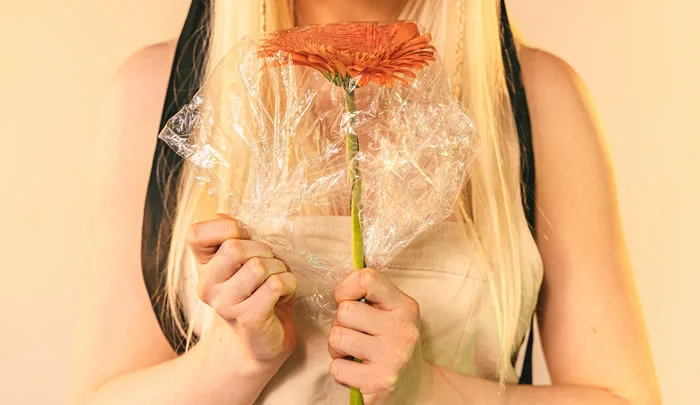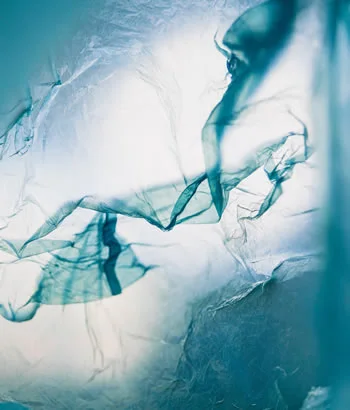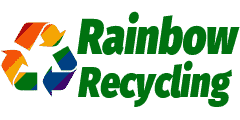Plastic wrap is used to cover food and prevent it from drying out. It is a thin plastic sheet that is typically clear and can be wrapped around many types of objects such as sandwiches, baked goods, and leftovers. Depending on where you live, recycling certain types of plastic may not be an option. So, is plastic wrap recyclable?
Plastic wrap is recyclable. The only issue is that you have to check the ingredients of the plastic wrap before you do so. Most plastic wraps can be recycled if they are clean and dry. On the other hand, cling film can’t be recycled because it is a complex polymer.
If you’ve ever wondered about this, or what types of plastic items are recyclable, then you’re not alone. Many people throw out soft plastics without knowing whether they’re recyclable or not. So, let’s find out more about plastic wrap recycling.
- What is plastic wrap made of?
- Is plastic wrap recyclable?
- Why is a plastic film not recyclable?
- Is plastic wrap biodegradable?
- Does plastic wrap go in recycling?
- Can the plastic wrap be reused?
- How long does a plastic wrap take to decompose?
- Is the plastic wrap around water bottles recyclable?
- Can the plastic wrap be recycled with plastic bags?
- Frequently asked questions
- Conclusion
What is plastic wrap made of?
Plastic wrap is a polymer – a long chain of molecules that are held together by chemical bonds.
But what is plastic wrap made of? Plastic wrap is made of plastic #3 and plastic #4, which are low-density polyethylene (LDPE) and linear low-density polyethylene (LLDPE), respectively.
Plastic wrap is a thin, stretchable, transparent film made of polymers that can be wrapped around objects.
Plastic wrap inhibits the diffusion of air and water vapor and does not allow odor or bacteria to travel through it.
Is plastic wrap recyclable?

Is plastic wrap recyclable and is plastic wrap compostable? Technically, it could be recycled.
Unfortunately, from a practical point of view, plastic wrap is not generally recyclable.
Plastic wrap or cling film is one of those things that you don’t think about much – it’s just sort of there, keeping your food fresh and your hands clean.
But it’s made of a type of plastic called polyethylene, which is not easily recycled.
So when you throw your used plastic wrap out in the trash, it’s likely going to end up in a landfill instead of being repurposed into new products.
The best way to tell if a product is recyclable is to look at its plastic resin code, which is usually printed on the bottom of the item or packaging.
To determine whether a plastic item is recyclable, check the number on the bottom of the item. If no number is visible, then look for one of these symbols.
If there is neither a number nor a symbol, then that might not indicate a product can be recycled.
For instance, numbers 2 and 4 printed on plastic bag wraps indicate that they are recyclable. These “soft” plastics can be recycled at participating drop-off locations.
When you’re thinking about which types of wraps you should recycle, please be sure to recycle plastic bags that don’t contain glue residues, beverage wraps wrapping from napkins, paper towels and bathroom tissue, bulk beverage containers, and the outer wrapping from diapers.
Also included in this category are clean, dry bags labeled #2 or #4.
On the other hand, you should avoid recycling:
- Food or cling wrap. This includes plastic wrap from around food, as well as plastic bags used to store and sell food. This also includes frozen food bags and pre-washed salad bags.
- Plastic film that has been painted or has excessive glue residue. This includes shrink wrap, which is typically found on furniture, electronics, and other large items.
Why is a plastic film not recyclable?
So can we discuss why is plastic film not recyclable? It’s always a hot topic for discussion. Plastic wrap is technically recyclable, but it’s hard to recycle.
Plastic wrap often directly contacts food, which can lead to contamination of other products during the recycling process.
Plastic wrap also comes in a variety of different types and thicknesses, making it difficult for recycling facilities to process and sort them.
Because the plastic wrap is so thin, it can also blow around in the wind and contaminate recycling bins.
For example, if you put an empty plastic bottle in your blue bin for recycling, but some plastic wrap gets stuck on the lid or inside of it, then the recycling facility will have a hard time sorting out what should be recycled and what shouldn’t be.
It means that those items won’t get recycled at all!
According to the National Recycling Coalition, plastic film is technically recyclable, but it’s difficult to recycle because it’s so thin.
Plastic film is also difficult to separate from other materials in recycling bins and can get caught in machinery during processing.
Is plastic wrap biodegradable?

Is plastic wrap biodegradable? The REAL answer is that it is non-biodegradable.
While it will eventually break down, it takes hundreds of years before this happens.
Plastic is made from petroleum products and other chemicals, which do not break down in nature.
Biodegradable means that something can be broken down into carbon dioxide and water by microorganisms living in the soil.
The production process for polyethylene uses high heat and pressure to force the ethylene gas into its polymer form.
This process creates a thin plastic film that can be used to cover food and other items to keep them fresh and prevent contamination by air or moisture.
Most plastic wrap products take up to 450 years to decompose, and even then they don’t fully degrade into their component parts.
They just become broken-down pieces of plastic that can persist in the environment for a very long time.
However, if you have a compost bin or are willing to recycle your plastic wrap, there are ways for you to decrease your carbon footprint and reduce the amount of waste going into landfills.
Does plastic wrap go in recycling?
Plastic wrap is made from polyvinyl chloride (PVC), a type of plastic that can be recycled.
However, because it’s so thin and lightweight, it doesn’t always get collected by curbside recycling programs.
If you’re wondering does plastic wrap go into recycling, check with your local recycling program to find out what kind of plastics they accept.
Can the plastic wrap be reused?
If you’re wondering can plastic wrap be reused, I have good news for you: OF COURSE, IT CAN. So instead of throwing away your old plastic wrap, try to reuse it in these 7 ways:
- Protect your paintings
A plastic wrap is a great tool for protecting the surface of your paintings. Just place it over the painting and press down to make sure it sticks to the entire surface.
The plastic will protect your painting from dust and dirt as well as moisture from condensation on the glass that might otherwise seep into the canvas.
- Keep your flowers fresh
If you’re planning on keeping fresh flowers around for more than a few days, wrapping them in plastic film can help keep them looking fresh longer by sealing them in moisture and keeping harmful bacteria at bay.
- Prevent leaks in your luggage
If you’re traveling with liquids or foods that need to stay cold, wrap them in plastic bags and then cover them with a layer of plastic wrap.
This will keep any liquid from leaking out of the bag, and it will keep dirt or bugs from getting into the bag as well.
- Pack your unused dishes
If you are planning on doing some camping or backpacking, take along large pieces of plastic wrap to use as plates or bowls when needed.
They’ll be lightweight, durable, and disposable – perfect for outdoor adventurers!
- Fix drafty windows
You can use leftover pieces of plastic wrap as a temporary fix for drafty windows at home. Just stick them over the window frame where there’s airflow coming in, and enjoy being warm again!
- Keep your fridge clean
Keep your fridge clean by placing an old sheet of plastic wrap between your fridge’s front and back doors.
This will keep dust and dirt out while still allowing air to circulate freely through the cracks in the door frame.
- Prevent your fruit from over-ripening
Prevent your fruit from over-ripening by cutting off a small piece of plastic wrap, placing it over the top of each piece individually so that no air can get into contact with their skin, then storing them in their original containers until you’re ready to eat them.
How long does a plastic wrap take to decompose?
It’s hard to tell how long a plastic wrap takes to decompose.
Plastic items take up to 1000 years to decompose in landfills, but the specific type of plastic and the conditions where it is disposed of can make a big difference in how long it takes for it to break down.
For example, if you’re talking about PVC (plastic #3), it takes more than 450 years for that kind of plastic to biodegrade.
However, if you expose it to a certain type of fungus or thermal degradation, you can expedite the process.
The lining of the coffee cup will decompose in 2 years to 20 years, depending on what type of LDPE it is.
Is the plastic wrap around water bottles recyclable?
It’s hard to tell if the plastic wrap around water bottles is recyclable. Technically, it is, but only if it’s made of plastics #2 and #4.
Unfortunately, many curbside programs aren’t recycling it, so you should check with your local curbside service to find out what they’re doing with it.
Can the plastic wrap be recycled with plastic bags?
Plastic wraps, like dry cleaning bags, food wrappers, and more, can be recycled along with plastic bags.
It must be taken to a drop-off location, like a grocery or other retail store, to be collected for recycling.
Frequently asked questions
Here are some of the most frequently asked questions about plastic film recycling:
Is plastic wrap toxic waste?
If they’re not treated properly, both PVC and PVDC can release a highly toxic chemical called dioxin. Dioxin is known to cause cancer and reproductive disorders in animals, and it’s suspected of doing the same in humans.
Is plastic wrap recyclable in Toronto?
Technically, yes, it can be recycled. The problem with recycling plastic wrap is that it’s so thin that it can get tangled up in the machinery and cause problems. That’s why most recycling facilities don’t accept plastic wrap. However, some do take it, but it must be clean and dry.
Conclusion
As you will be able to read here, it takes a lot of work and money to properly recycle plastic wrap into new material, and other considerations will have to make before we can ever really say that it is recyclable.
If it’s not something that you would take to the curb for recycling, then there are still other ways to properly dispose of your plastic wrap.
And that’s about it. But if you still have any questions and doubts about is plastic wrap recyclable, leave a comment and I’ll get back to you as soon as possible.
